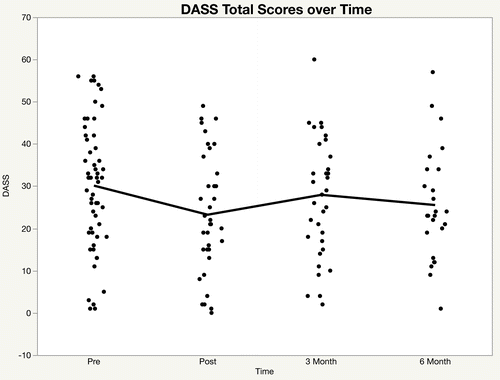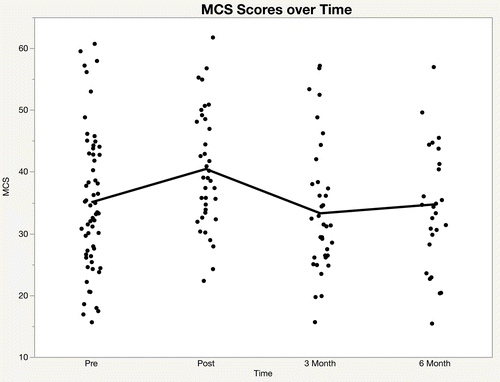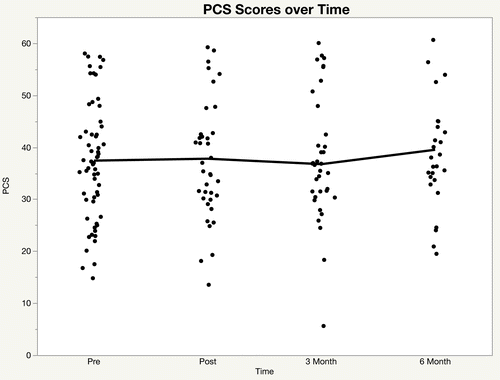Figures & data
Table 1. Number of responses over all testing periods
Table 2. Demographics for the participants of project sanctuary
Table 3. Military related demographics for the participants of project sanctuary
Figure 1. Current health conditions for the participants of project sanctuary (N = 127).
Notes: Other combat-related injuries include gunshot wounds, shrapnel, etc. Other non-combat related injuries include frostbite, fibromyalgia, kidney stones, Type 2 diabetes, chronic back pain, frostbite, and SCI. Pre-test reports of health conditions were used to create this figure.
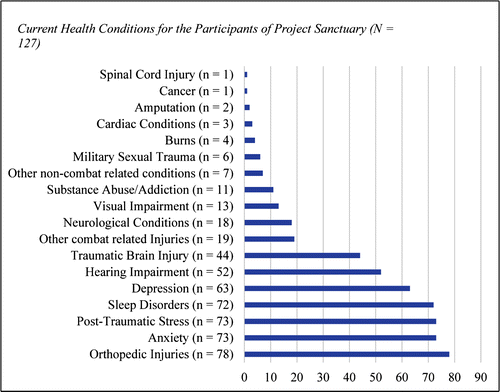
Table 4. Sequential models
Table 5. Model E (final) results
Figure 2. PCL total scores over time.
Notes: The figure show raw outcome measures for those respondents who provided a VA rate. Each respective line demonstrates how the estimated average outcomes change across time.
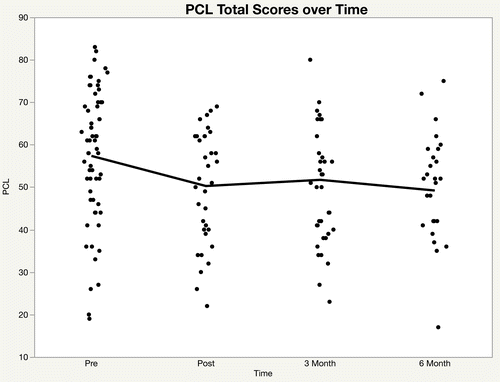
Figure 3. DASS total scores over time.
Notes: The figure show raw outcome measures for those respondents who provided a VA rate. Each respective line demonstrates how the estimated average outcomes change across time.
